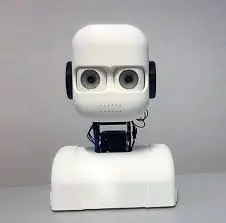Robot’s speech are anticipated to enter a variety of real-world contexts as they evolve, including homes, offices, malls, airports, healthcare institutions, and assisted living facilities. Roboticists need to make sure that people have a positive perception of and faith in robots, though, in order to encourage their broad usage and adoption.
Recent research at Lund University in Sweden sought to determine the factors that influence a human user’s trust in robots. They specifically sought to ascertain whether a humanoid robot’s ability to speak can affect a human user’s faith in it in their paper, which was scheduled to be published in the proceedings for the SCRITA workshop at IEEE Ro-man 2022.
Amandus Krantz, one of the researchers who conducted the study, told TechXplore, “The concept for the paper came about after we obtained some unexpected outcomes in a previous experiment. “We were looking into how unreliable gaze behavior can affect user confidence in a humanoid social robot. The findings revealed a substantial change in trust across all conditions between before and after interaction with the robot, but no decline.
Previous research in robotics reveals that humans’ trust in humanoid robots may be influenced by their perception of their intelligence. Krantz and his colleagues began to consider the notion that a robot’s capacity to communicate, which may be interpreted as intelligence by a human user, determines how much a human user trusts the robot in light of the findings they acquired in their prior study.

According to Krantz, “we hypothesised that perhaps the speech component was raising the apparent intelligence of the robot, sufficiently that the associated change in trust camouflaged the change in trust from the flawed conduct.”
The same experiment that was done in the prior study was repeated by the researchers to test their theory, but this time the robot was silent. Users tended to have less faith in the robot and become more aware of its flaws when it was silent, they discovered. This implies that the participants’ trust in the robot can actually rise as a result of its speech capabilities.
Every study participant watched a movie of a humanoid robot exhibiting either improper or proper behavior, speaking or remaining silent, according to Krantz. “The robot would speak and provide information on one of a number of objects that were presented to it. Following the viewing of this film, the participants were given a variety of questionnaires that measured their level of trust in the robot as well as their opinions of its intellect, likeability, and animacy (how alive it appears).”
227 people participated in the studies the researchers ran online. They discovered that, on general, participants trusted the non-defective robots the most after examining their responses. Interestingly, participants claimed that they trusted malfunctioning robots almost as much as non-faulty robots when they could converse.
According to Krantz, “as far as we know, this is the only study that has studied how speech ability affects trust.” “Similar studies exist, although they frequently focus on the impact of speech content (typically an apology for an error) rather than speaking ability. As for the results’ practical ramifications, they suggest that adding a human-like voice component could be advantageous for robot vacuum manufacturers who want to prevent their robots from being abandoned after an operational fault.”
This team of researchers’ most recent work provides insightful and fascinating information about how humans’ perceptions of and relationships with robots can be influenced by their ability to communicate. Future robotics businesses and developers may be influenced by their findings to place more emphasis on a robot’s speech in order to gain the trust of potential customers.
We are preparing a follow-up study in which participants engage with the robot in a real-world situation as the trials described in the paper were conducted online, which is known to potentially result in somewhat different outcomes from physical human-robot interaction experiments, Krantz said. We are also preparing a number of research to look into how other features of a humanoid robot, like such as a narrowing or dilating of the pupils.
Read More
- A secure global supply chain is possible with blockchain.
- Using electricity to locate materials that can “learn” is shocking to the system
- Cracking of Eggshells using computing power
- A Way To Help Reduce Global Warming Is Through Solar Energy Conversion
Conclusion
A question comes from the researchers say Can a robot’s speech capabilities influence how much people trust it? we are waiting for your answers in the comment section.



